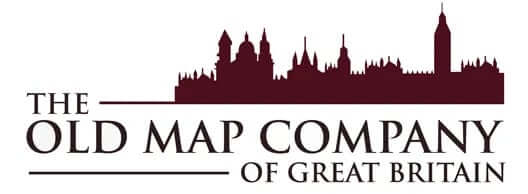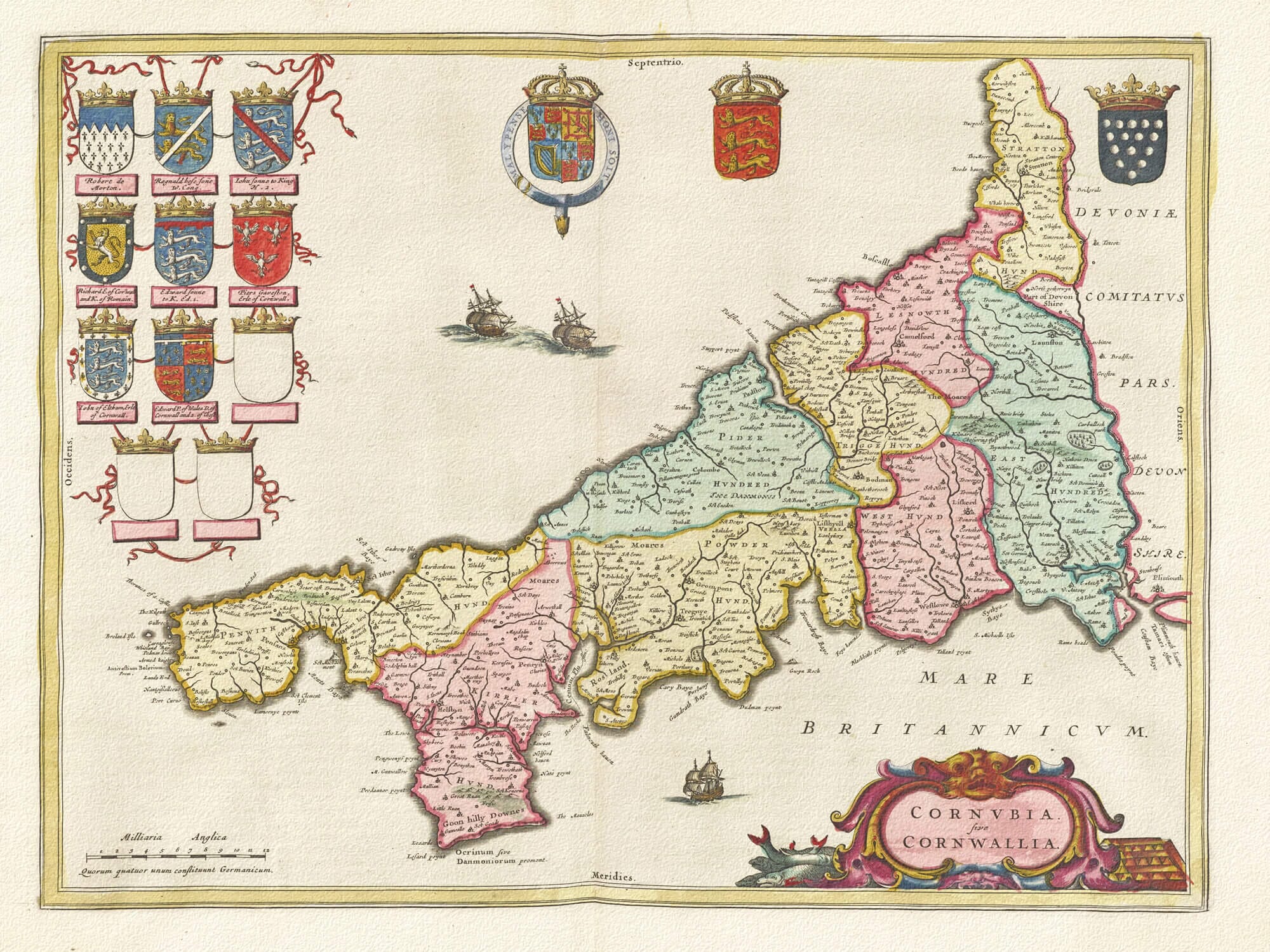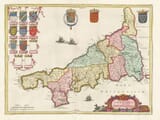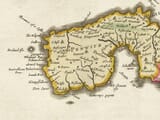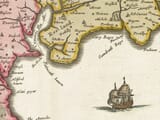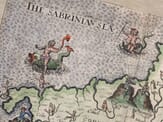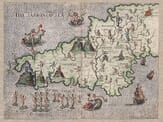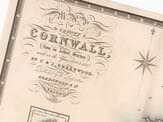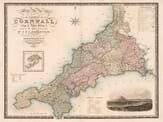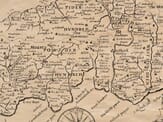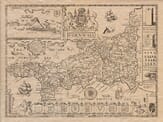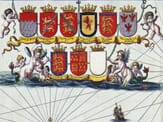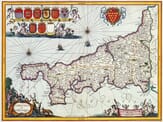Description
Cornwall in the 1600s: A Region Shaped by Conflict and Industry
Cornwall, located in the southwest of England, was a region of significant historical, cultural, and economic importance during the 1600s. The century was marked by a combination of political conflict, economic development, and a unique social structure that would shape the region for centuries to come. From the turmoil of the English Civil War to the flourishing of its mining industries, Cornwall’s history during this period was a reflection of broader national events, yet also distinct in its local characteristics.
The English Civil War and Its Impact on Cornwall
The most significant event of the 1600s in Cornwall was the English Civil War, which lasted from 1642 to 1651. The conflict divided England into two factions: the Royalists, who supported King Charles I, and the Parliamentarians, who sought to limit the power of the monarchy. Cornwall was largely a Royalist stronghold, with the region’s gentry and nobility throwing their support behind the king. This loyalty to the crown was partly due to Cornwall’s historical ties to the monarchy, but also to its deep-rooted traditionalism and resistance to the Puritan movement that sought to reform the Church of England.
Several key battles took place in Cornwall during the war, and the region became an important base for the Royalist forces. The Battle of Stratton in 1643 was one of the earliest engagements in the conflict and resulted in a Royalist victory, which allowed Cornwall to remain under Royalist control for some time. However, the tide of the war shifted in favour of the Parliamentarians, particularly after the Royalist defeat at the Battle of Naseby in 1645. Eventually, in 1646, Cornwall fell to the Parliamentary forces, and the Royalist cause in the region collapsed.
The Rise of Piracy and Smuggling
Cornwall’s coastal geography, is featured on this old map with its rugged cliffs and remote coves, made it an ideal location for piracy and smuggling. Throughout the 1600s, the region’s maritime economy was bolstered by illicit trade, as English and Dutch pirates used Cornwall’s shores as a base to attack Spanish and Portuguese treasure fleets returning from the Americas. The wealth brought by these pirate raids fuelled local economies, but also made the region notorious for its lawlessness.
In addition to piracy, smuggling became widespread in Cornwall during this period. The imposition of high taxes and import duties on goods such as tea, tobacco, and brandy led to a thriving black market. Smugglers, often working in small, tightly-knit communities, resisted the authorities and formed a subculture that was in constant conflict with the crown’s tax collectors and customs officers. The prevalence of smuggling further ingrained a sense of resistance to external authority among the Cornish people.
The Growth of Mining Industries
While piracy and smuggling were significant to Cornwall’s economy, the region’s most important industry in the 1600s was mining. Cornwall was rich in mineral resources, particularly tin and copper, which were essential to the global economy at the time. The region had been a center of tin mining for centuries, and by the 1600s, Cornwall’s mines were among the most productive in the world. The demand for tin, used in the production of pewter and as a component in the soldering of metal, made Cornwall an essential player in European and global trade.
In addition to tin, Cornwall’s copper mines also began to flourish during this period. Copper was used in the production of brass and other alloys, and the expertise of Cornish miners became renowned. The development of more advanced mining techniques, such as the creation of steam engines to pump water out of deep mines, allowed for the exploitation of previously inaccessible resources. This innovation in mining technology not only enhanced Cornwall’s economic output but also laid the groundwork for later industrial advancements in England.
Religious and Political Unrest
The 1600s were a time of religious conflict in England, and Cornwall was no exception. The English Reformation, which had begun in the 16th century, continued to shape the religious landscape of Cornwall. While the majority of the population adhered to the Church of England, tensions between Protestant factions, such as the Puritans, and those loyal to traditional Anglican practices were palpable throughout the century.
The Civil War exacerbated these religious divisions, as the Royalists, who supported King Charles I, were generally aligned with the Church of England, while the Parliamentarians, led by figures like Oliver Cromwell, sought to impose stricter Protestant reforms. Cornwall, with its strong Royalist leanings, remained largely loyal to the established Church of England, and the region’s support for the monarchy was closely tied to its defence of the traditional religious practices of the Anglican Church. After the monarchy’s defeat in 1649 and the establishment of the Commonwealth under Cromwell, religious and political tensions in Cornwall continued to simmer, though the region never fully embraced Puritanism.
Decline of the Royalist Cause and Economic Hardship
Following the defeat of King Charles I and the eventual dissolution of the monarchy in 1649, England entered a period of Republican rule under Oliver Cromwell. Cornwall, once a bastion of Royalist support, experienced a decline in political and economic power. Many of the region’s noble families, having supported the king, lost their lands and influence, while the local economy suffered from the instability brought about by the Civil War.
Despite the political upheavals, Cornwall’s mining industry continued to be a vital part of its economy, but the loss of Royalist patronage and the disruptions caused by the war led to widespread poverty among the population. Additionally, the period of Commonwealth rule, followed by the Restoration of the monarchy in 1660, did little to restore the prosperity of Cornwall to its pre-war levels.
Conclusion
The 1600s were a tumultuous and transformative century for Cornwall. The region’s staunch Royalist sympathies during the Civil War, coupled with its vital role in the mining industry and its involvement in piracy and smuggling, made it a key player in both national and local history. While the region faced significant political and economic challenges, Cornwall’s distinctive culture, deeply tied to its Celtic heritage and maritime traditions, remained a defining feature of its identity and this is reflected in the map. Through the chaos of war, the rise and fall of the Royalist cause, and the expansion of its industries, Cornwall continued to shape its future and preserve its unique place in English history.
